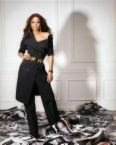[edit] Arrest and trial
Washington was arrested on May 8, 1916, charged with having bludgeoned to death Lucy Fryer (53), the wife of a farmer in Robinson, Texas, a small community seven miles south of Waco. Washington was transferred to the Dallas County Jail by McLennan County sheriff Samuel S. Fleming.
Washington's trial began in Waco on May 15 in the Fifty-fourth District Court, with Judge Richard I. Munroe presiding over a full courtroom. After hearing the evidence, a jury of 12 white men deliberated for only four minutes before returning a guilty verdict and assessing the death penalty. Before law officers could remove Washington from the court, a group of white spectators surged forward and seized the convicted youth. They hurried him down the stairs at the rear of the courthouse, where a crowd of about 400 persons waited in the alley. A chain was thrown around Washington's neck before he was dragged toward the City Hall, where another group of vigilantes had gathered to build a bonfire.
[edit] Lynch mob
A postcard showing the burned body of Jesse Washington on display in Robinson, Texas, seven miles from the place of lynching in Waco. The back reads: "This is the barbecue we had last night. My picture is to the left with a cross over it. Your son, Joe."Upon reaching the city hall grounds, the leaders of the mob threw Washington onto a pile of dry goods boxes under a tree and poured coal oil over his body. The chain around Washington's neck was thrown over a limb of the tree, and several men lowered his body onto the pile of combustibles and ignited a fire and watched him burn alive. An observer wrote:
"The boy was beaten and dragged to the suspension bridge spanning the Brazos River. Thousands roared, "Burn him!" Bonfire preparations were already under way in the public square, where Washington was beaten with shovels and bricks. Fifteen thousand men, women, and children packed the square. They climbed up poles and onto the tops of cars, hung from windows, and sat on each other's shoulders. Children were lifted by their parents into the air. Washington was castrated, and his ears were cut off. A tree supported the iron chain that lifted him above the fire of boxes and sticks. Wailing, the boy attempted to climb the skillet-hot chain. For this the men cut off his fingers. The executioners repeatedly lowered the boy into the flames and hoisted him out again. With each repetition, a mighty shout was raised."
Two hours later, some men placed the burned corpse in a cloth bag and pulled the bundle behind an automobile to Robinson, where they hung the sack from a pole in front of a blacksmith's shop for public viewing and intimidation. Later that afternoon, constable Les Stegall retrieved the remains and turned them over to a Waco undertaker for burial.
Though lynching violated Texas law, no members of the mob were prosecuted. However, the foreman of Washington's jury criticized local law officers for failing to prevent the lynching, and a special committee of Baylor University faculty passed resolutions denouncing mobs. A. T. Smith, an African American journalist, editor of the Paul Quinn Weekly, was arrested and convicted of criminal libel after he printed allegations that Lucy Fryer's husband had committed the murder.
[edit] Press coverage
The Nation, The New Republic and The New York Times condemned the lynching.[2] Only a few Texan newspapers denounced the Waco mob. The Houston Post, Houston Express, Austin-American Statesman and San Antonio Express printed critical editorials, but the Dallas newspapers made few comments. The South Waco Morning News expressed regret for the incident, but resented what it called the "wholesale denunciation of the South and the people of Waco" by the national press. The most important demonstration of outrage emanated from the National Association for the Advancement of Colored People, which launched a full-scale investigation of the affair and employed the incident as a cause célèbre in the organization's crusade for a federal anti-lynching bill. A photographer's pictures of the lynching strengthened the argument.
[edit] References
Subscribe to:
Post Comments (Atom)


No comments:
Post a Comment